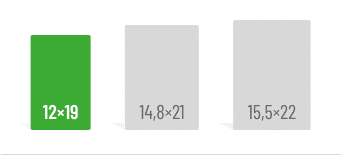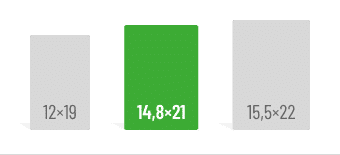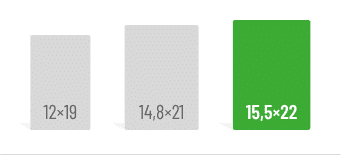First things first:
- Pay attention to the relevance of potential sources to your topic, the origin of the text, the authors, the publication date, and the objectivity of the content.
- Only use texts as sources if they meet academic standards.
There are several criteria that can help you determine whether a source is credible and suitable for citation. While not all of these need to be met to classify a text as academic, they serve as a helpful guide. Here are eight key characteristics summarized to assist you in deciding whether to use a source in your essay, presentation, or thesis.
Relevance: Is the source relevant to my topic?
The first question you should always ask yourself when evaluating a potential source is: Are the information and insights provided here relevant to my work? Sometimes you’ll realize later in the writing process whether the source is actually necessary, but especially in the beginning, it’s better to bookmark too many sources than too few. However, all your sources should meet a certain standard.
First impression: How does the spring seem to you at first glance?
For example, if the text contains numerous spelling errors and appears to lack a coherent structure, it’s best to avoid using it. Trust your instincts — if a source seems questionable to you, it probably is.
Origin: Where was the text published?
A scholarly journal or a reputable publisher is generally more trustworthy than a personal blog. The texts published by such sources are often peer-reviewed, meaning they are evaluated by independent experts in the same field. Pay attention to whether the website or publisher appears credible and check what other types of content the author or publisher has produced.
Author: Is an author listed?
The attribution of authorship is crucial. For websites, the legal notice or “About” section typically provides information about who is responsible for the content. Ideally, there should also be evidence that the author is knowledgeable about the subject they are writing about. This can often be identified by an academic title, affiliation with a university or research institution, or a history of multiple credible publications in the field.
If no author is mentioned, it’s generally a bad sign — unless it is explicitly stated that the author wishes to remain anonymous. While anonymity can be valid even in academic contexts, having a name attached to the text usually enhances its credibility.
Up-to-dateness: How old is the text?
The older a text is, the more likely it is that new findings have emerged in the field. Science evolves rapidly, with constant discoveries and updates to older works. Sometimes it’s enough to look for the latest edition of a book, as many academic texts are revised every few years. Websites should also be regularly updated and maintained. If you notice that a site hasn’t been updated in years, it’s probably not a good source—unless it deals with universally applicable information.
Addressees: To whom is the text addressed?
You can often tell if a text is intended for other experts in the field by whether it assumes a certain level of prior knowledge. This is what differentiates “true” scholarly literature from textbooks, which, although often written by academics, may not always be suitable for citation. A certain level of formality and academic language also helps in identifying reliable sources.
Verifiability: Are sources indicated in the text and is there a list of sources or bibliography?
References are crucial for the verifiability of a text and demonstrate the author’s expertise. Sources can be provided in footnotes or directly within the text. All quotes or data that were not independently collected must be properly cited. Images should also include source information. A bibliography or list of references is essential. Even if there are no direct quotes, it should still be clear where the author’s facts and information originate.
Objectivity: Are different points of view examined?
If a text is very opinionated and argumentative, this is often a sign of a rather less citable source. A few quotations and a sparse list of sources are often an indication of a rather subjective treatise. It’s important to note, however, that no source can be completely objective, as no individual thinks with 100% objectivity. Nevertheless, a certain level of academic rigor and impartiality should still be maintained.
With these tips, your next research project will surely be easier when it comes to distinguishing between good and bad sources. Good luck!
Sources:
- https://www.studierenzweinull.de/inhalte/beurteilung-von-quellen/index.html
- https://www.cornelsen.de/empfehlungen/referat/gute-quellen-erkennen
- https://www.hs-osnabrueck.de/fileadmin/HSOS/Homepages/LearningCenter/Dateien/Toolbox/TuE/Qualitaetskriterien_wissenschaftliche_Literatur.pdf
- https://www.uni-ulm.de/fileadmin/website_uni_ulm/kiz/bib/schuelermaterial/kriterien_internetquellen.pdf
- https://li.hamburg.de/contentblob/3461588/aeeb63b90b0c1ca82dbb0737d318392c/data/pdf-internetquellen-bewerten-in-der-profiloberstufe.pdf
You might also be interested in these articles:
Frequently asked questions
Check whether the information directly fits your question and clearly supports or deepens your topic.
Reliable sources have a clearly identified author, are published in academic journals or by reputable publishers, and are based on verifiable references.
Older sources may contain outdated information. Make sure the text has been regularly updated or that you’re using the latest edition to ensure your research starts with the most current knowledge.
A source is trustworthy if it includes a complete bibliography, provides evidence for all cited information, and objectively considers different perspectives.
Texts written for professionals often require prior knowledge and are considered more scientific than those written for a general (lay) audience.










